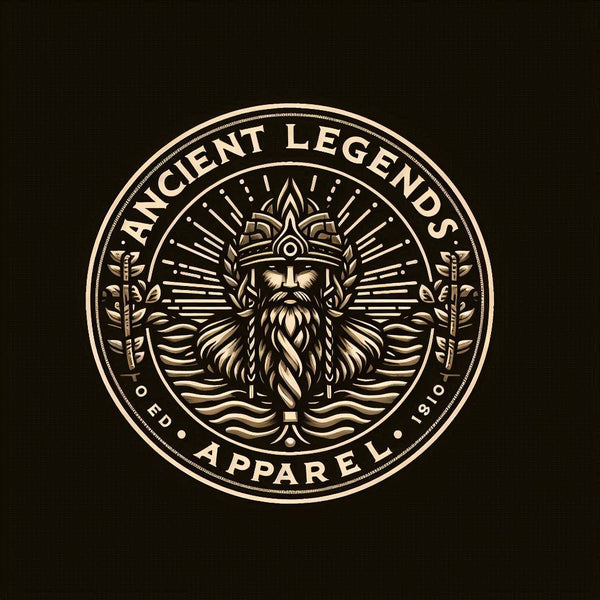Magical Creatures of Mesopotamian Legends
Karl FShare
INTRODUCTION
Journeying back to the land that saw the rise of civilization, we delve into the ancient legends and mythology of Mesopotamia, a fertile crescent nestled between the Tigris and Euphrates rivers. Rooted in rich soil and straddling what is now modern-day Iraq, Syria, and Turkey, this enigmatic region fostered the imagination of early mankind and sired an intricate tapestry of myths and tales. Within its warp and weft, one encounters a panoply of magical creatures, each woven meticulously with threads of divinity, terror, wisdom, or whimsy. They are the embodiments of nature’s forces, human virtues, vices, fears, and hopes. In this expanse of mythological fauna, let us draw our focus to the most stimulating creatures that adorned Mesopotamian myths and legends, embodying its culture and ethos.
ORIGIN AND CULTURAL CONTEXT
The roots of many Mesopotamian magical creatures are steeped in an amalgam of influences spanning Sumerian, Akkadian, Babylonian, and Assyrian civilizations, which occupied this fertile land in succession. Each of these cultures made distinct contributions to the mythology, shaping the nature and form of these supernatural beings. The Euphrates' lush plains and Babylon’s radiant ziggurats bore witness to the birth of these ethereal beings, woven into epics and etched into temple walls. Their existence was bound not merely to fantastic tales, but to concrete reality, offering explanations for natural phenomena, mirroring social and moral values, or serving as cosmic arbitrators of divine justice.
THE LEGEND OR STORY
Several magical creatures assume center-stage in Mesopotamian myths and legends. The Sumerian legends narrate the tale of Anzu, a gargantuan bird with a lion's head, known for his intelligence and greed. Anzu once stole the divine ‘Tablet of Destinies,’ bringing chaos to the natural world, only to be defeated by the god Ninurta, reinstating cosmic balance.
The epic of Atra-Hasis portrays the monstrous demon Humbaba, appointed by god Enlil to guard the Cedar Forest. The epic hero Gilgamesh and his companion Enkidu ultimately slay this demon, symbolizing the tumultuous struggle between order and chaos.
Simultaneously, the benign, seven-headed serpent known as Mushussu found reverence in Babylonian culture as the sacred steed of the god Marduk, a symbol of divine authority and protective grace.
INTERPRETATIONS AND SYMBOLISM
The interpretation of these magical creatures is intertwined with the society, morality, and spirituality of Mesopotamian culture. Anzu, for instance, embodied the debilitating effects of unrestrained ambition and rebelliousness, while his defeat underscored the triumph of order over chaos.
Contrarily, the narrative of Humbaba underscored the consequences of defiance against divine decree. His demise at the hands of Gilgamesh echoes the enduring human quest to conquer fear and chaos, reigning victorious over the heart of darkness.
Moreover, the seven-headed serpent Mushussu epitomized the beneficence of divinity. Its image imprinted on city gates and walls, it served as a divine sentinel against evil, heralding protection, prosperity, and harmony.
COMPARISONS IN OTHER CULTURES
A cross-cultural comparison indicates intriguing similarities. The Eye of Horus in Egyptian mythology, like Anzu, represents restoration after chaos, suggesting a common theme of reestablishing order. Likewise, Humbaba's narrative parallels the Greek myth of the Lernaean Hydra slain by Heracles. Both denote the everlasting battle between order and chaos, light and darkness, heroism and fear.
The Mushussu resonates with the Leviathan from the Hebrew Bible and the Naga in Hindu mythology. All embody guardianship and divine manifestation, magnifying cosmic protection and balance.
MODERN REFERENCES AND POP CULTURE
Mesopotamian magical creatures continue to infuse modern popular culture, from gaming to literature, and cinema. The multi-headed serpent Mushussu appears in the Final Fantasy gaming franchise, while the demon Humbaba emerges in J.R.R. Tolkien's Middle-earth narrative as a precedent for terrifying forest creatures.
LEGACY AND LASTING MYSTERIES
As archaeologists continue unraveling the enigmas of ancient Mesopotamia, these mythological creatures persistently tantalize researchers and aficionados alike. Are there more undiscovered beasts lurking beneath the sand? Do these creatures possess untapped symbolic meanings? The constant exploration and reinterpretation of these magical creatures keeps the splendour of Mesopotamian mythology alive, perpetuating its legacies into our modern lives.
By revisiting these mythical beings from an ancient civilization, we appreciate the intrinsic connection between the magical and the mundane. These creatures encapsulate an era's essence, reflective of humanity’s timeless struggle against chaos and calamity, its yearning for order, harmony, and divine salvation. In their narratives, we find echoes of our past and connections to our present, reminding us of the eternal cyclicity of life. They persist, timeless and transcendent, in our collective unconscious, relaying humanity's hopes, fears, desires, and dreams through the mists of time.
